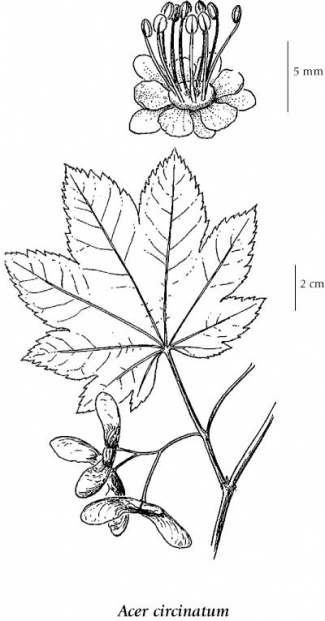TAXONOMIC KEY TO ACER
1. Leaves pinnately compound; petals absent ..........A. negundo
1. Leaves simple, palmately lobed; petals usually present.
2. Flowers 10-50; inflorescence racemose or in panicles; trees up to 30 m tall.
3. Leaves grey, white or purplish below, the stalks without milky juice when cut; inflorescence in long, hanging panicles; fruits glabrous ..........A. pseudoplatanus
3. Leaves green below, the stalks with milky juice when cut; inflorescence racemose or in stiff, more or less erect panicles; fruits glabrous or hairy.
4. Leaves lobed beyond the middle, the tips abruptly sharp-pointed; inflorescence racemose; fruits hairy ..........A. macrophyllum
4. Leaves not lobed beyond the middle, the tips bristlelike; inflorescence in stiff, more or less erect panicles; fruits glabrous ..........A. platanoides
2. Flowers usually less than 10; inflorescence umbellate or corymbose; plants usually shrublike and less than 10 m tall.
5. Leaves 3- to 5-lobed, glabrous to sparsely glandular short-hairy; sepals green.......... A. glabrum
5. Leaves 7- to 9-lobed, soft-hairy beneath and often hairy above; sepals red ..........A. circinatum
